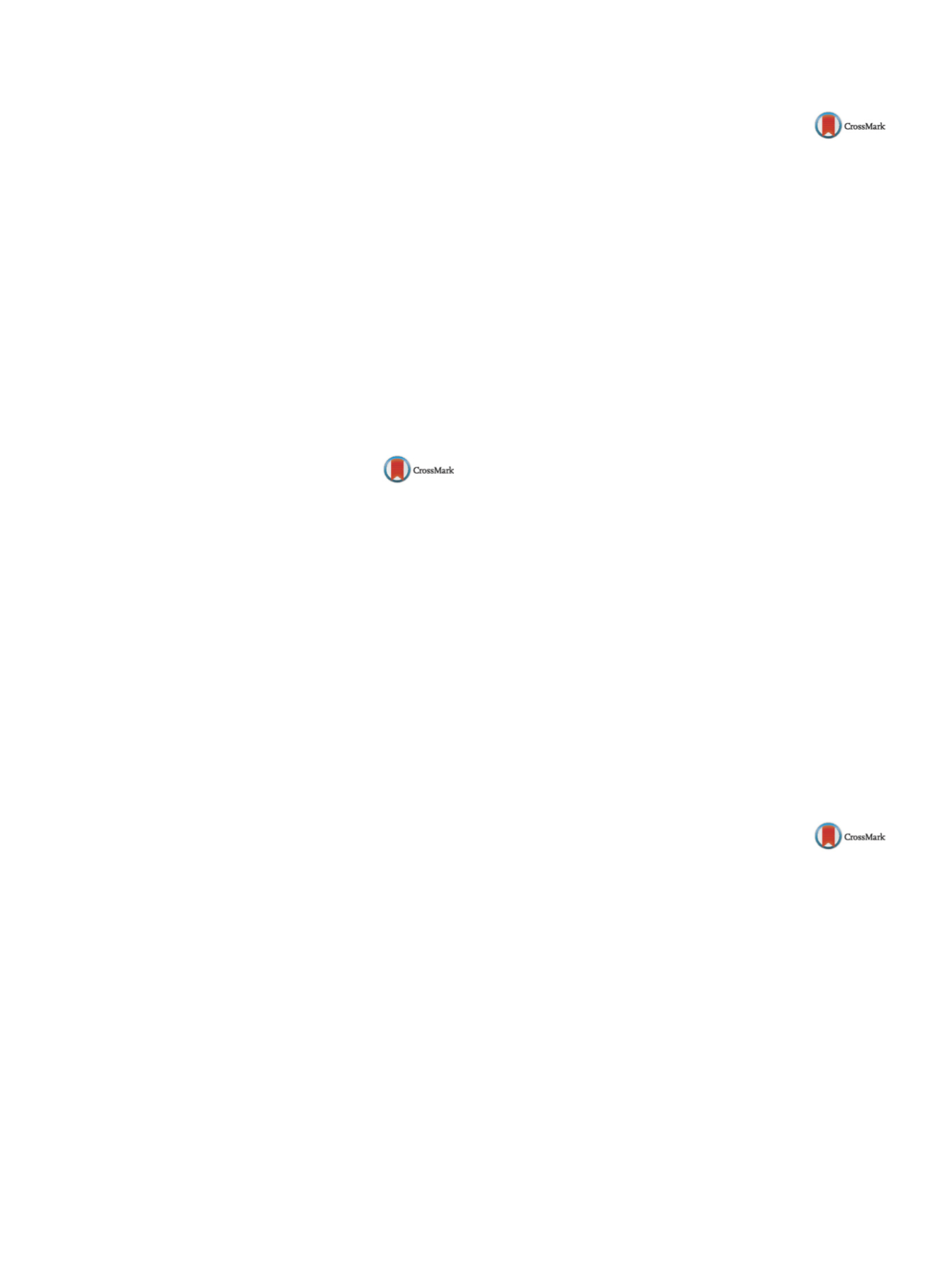

S702
25th European Congress of Psychiatry / European Psychiatry 41S (2017) S645–S709
Case report
Mrs. W. is a 28-year-old mother of three children. In
her medical history, she was diagnosed with gestational diabetes
and treated briefly with insulin. She was hospitalized several times
for hypoglycemia and she was diagnosed with factitious disorder.
Lately, her youngest daughter aged 2 years old was hospitalized
in the pediatric department for repeated unexplained loss of con-
sciousness. The hospitalization lasted 2 months with recurrence of
severe hypoglycemia. A full metabolic screen revealed no abnor-
malities. The mood of the mother appeared quite discordant with
the situation. Strict monitoring of maternal behavior showed that
the mother gives insulin injections to her daughter. She denied
deliberately injecting insulin, and then she accused the health
workers. She was referred to our psychiatric department and we
diagnosed the MSBP.
Conclusion
MSBP should be considered particularly in patients
who have been evaluated by more than one hospital and have
discordant test results.
Disclosure of interest
The authors have not supplied their decla-
ration of competing interest.
http://dx.doi.org/10.1016/j.eurpsy.2017.01.1244EV0915
Which one is the best anaesthetic
agent for Ect?
H. Saiz Garcia
1 ,∗
, L. Montes Reula
1, A. Portilla Fernandez
1,
V. Pereira Sanchez
2, N. Olmo Lopez
3, E. Mancha Heredero
1,
A.S. Rosero Enriquez
1, M.E. Martinez Parre˜no
11
Complejo Hospitalario Navarra, Psychiatry, Pamplona, Spain
2
Clinica Universidad Navarra, Psychiatry, Pamplona, Spain
3
CSM Salburua, Psychiatry, Vitoria, Spain
∗
Corresponding author.
Introduction
The most frequently used anesthesiologic agents
are methohexital, thiopental, etomidate, propofol, ketamine, and
sevoflurane. The objective is to clarify the differences on recov-
ery, cardiovascular variables, cognitive functions, and response to
treatment showed by these drugs.
Methods
A review was conducted aiming to clarify the differ-
ences between anaesthetic agnets used in ECT. The literature search
was conducted in PubMed data reviewing articles dating between
2015 and 2016.
Results
– Propofol seems to have better hemodynamic effects
in comparison with etomidate in patients with schizophrenia and
depression;
– The seizure duration was significantly shorter with propofol, but
this did not cause a difference regarding clinical improvement;
– The seizure duration was longer with etomidate in many studies.
It did not decrease in a dose-dependent fashion with etomidate in
a study comparing methohexital, etomidate, and propofol;
– The most frequently observed adverse effects were arrhythmias
and nausea and they occurred more frequently in patients who
were given thiopental. The pain at the injection site was more
frequent in patients who were given propofol;
– Etomidate seems to have better clinical improvement than
thiopental. Thiopental seems to have better results than propofol,
which has an anticonvulsant feature effects.
Conclusions
In order to figure out which anaesthetic agent was
the most indicated for undergoing ECT, we found that both EEG-
based seizure duration and motor seizure duration showed the
sequence etomidatemethohexical>thio- pental>propofol. These
items are directly related with clinical improvement. When a drug
is chosen, It is important to individualize the treatment according
to the patients’ comobidity.
Disclosure of interest
The authors have not supplied their decla-
ration of competing interest.
http://dx.doi.org/10.1016/j.eurpsy.2017.01.1245EV0916
Neuroacanthocytosis syndromes and
neuropsychiatry symptoms associated
H. Saiz Garcia
1 ,∗
, L. Montes Reula
1, A. Portilla Fernandez
1,
V. Pereira Sanchez
2, N. Olmo Lopez
3, E. Mancha Heredero
1,
A.S. Rosero Enriquez
11
Complejo Hospitalario Navarra, Psychiatry, Pamplona, Spain
2
Clinica Universidad de Navarra, Psychiatry, Pamplona, Spain
3
CSM Salburua, Psychiatry, Vitoria, Spain
∗
Corresponding author.
Introduction
Neuroacanthocytosis is an infrequent cause of both
neurological and psychiatric manifestations, and acanthocytes,
which are a special form of spiculated red blood cells. Clinically sig-
nificant psychopathology, ranging from behavioural disturbance to
frank psychiatric illness, has been reported to occur in up to 60% of
ChAc patients.
Methods
A review was conducted aiming to clarify the phys-
iopathology of this illness and its clinical features in order to
distinguish neuroacanthocytosis from other neurological or psy-
chiatric diseases. The literature search was conducted in PubMed
data reviewing articles dating between 2010 and 2016.
Results
– Neuroacanthocytosis autosomal recessive disorder
associated with mutations or deletions in the VPS13A gene on
chromosome 9q, which codes for the membrane protein chorein.
Chorein is strongly expressed in the brain. Chorein loss particu-
larly affects the basal ganglia, especially the caudate nucleus and
putamen;
– Dysexecutive syndromes, OCD, depression and possibly psy-
chosis, which may precede the frank motor and cognitive
impairment;
– The most recently developed treatment for neuroacanthocytoses
is the use of deep-brain stimulation (DBS), with stimulation of the
globus pallidus internus.
Conclusions
While conducting a neurological exam, secondary
causes of psychosis have to be included in the differential diagno-
sis. It is important to notice the possible confusion between tardive
dyskinesia and a primary movement disorder. It should be neces-
sary to investigate all de novo movement disorders in psychotic
patients in order to eliminate etiologies other than iatrogenic ones.
Disclosure of interest
The authors have not supplied their decla-
ration of competing interest.
http://dx.doi.org/10.1016/j.eurpsy.2017.01.1246EV0917
A review about comorbidity between
obsessive-compulsive symptoms and
huntintong disease and a case report
L. Sánchez Blanco
1 ,∗
, M. Juncal Ruíz
1,
G. Pardo de Santayana Jenaro
1, M. Goméz Revuelta
2,
R. Landera Rodríguez
1, O. Porta Olivares
1, D. Abejas Díez
1,
N.I. Nú˜nez Morales
11
Hospital Universitario Marqués de Valdecilla, Psychiatry,
Santander, Spain
2
Hospital Universitario de Álava-sede Santiago, Psychiatry,
Vitoria-Gasteiz, Spain
∗
Corresponding author.
Introduction
The concept of obsessive-compulsive disorder
(OCD) as a disorder that affects the basal ganglia arising to the
phenomenological similarities found between idiopathic OCD and
other conditions associated with basal ganglia disease such as
Huntington’s disease (HD) and Sydenham’s chorea. Huntintong’s
disease is characterized by cognitive, motor and neuropsychiatric
symptoms.
Aims
A review of articles published from 1989 to 2016 in Pub-
Med and UpToDate about relationship between HD and obsessive-
compulsive symptoms.


















